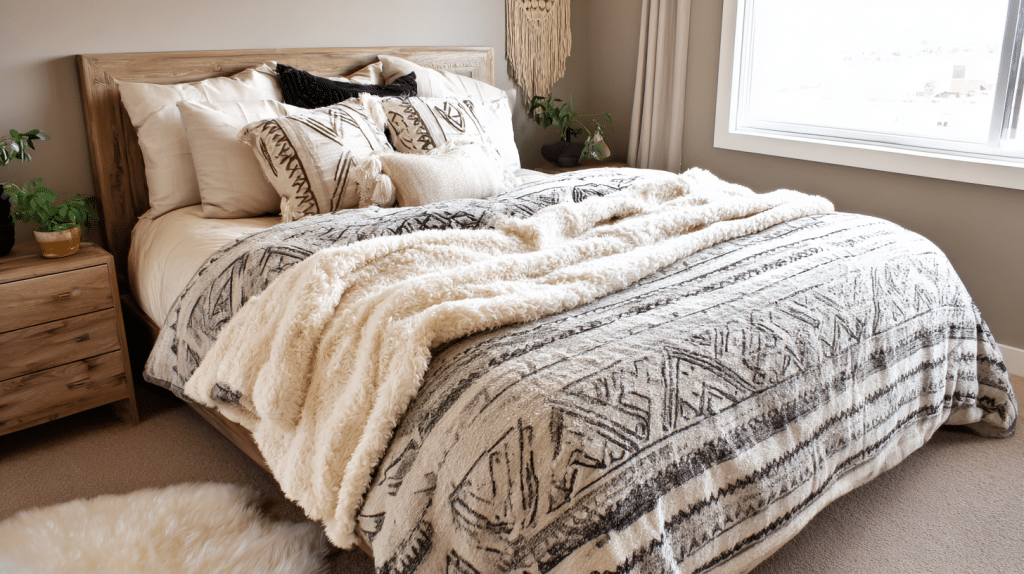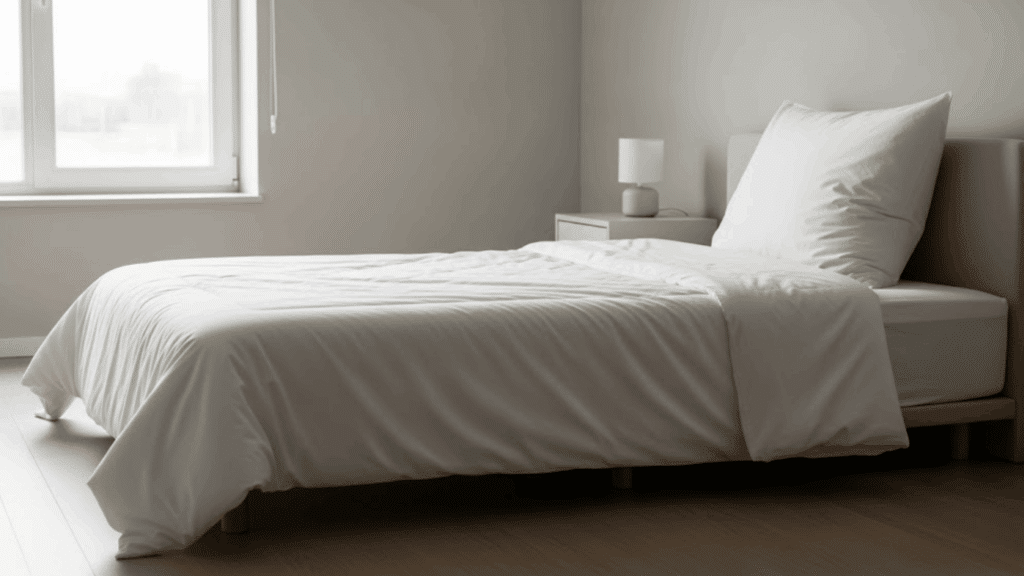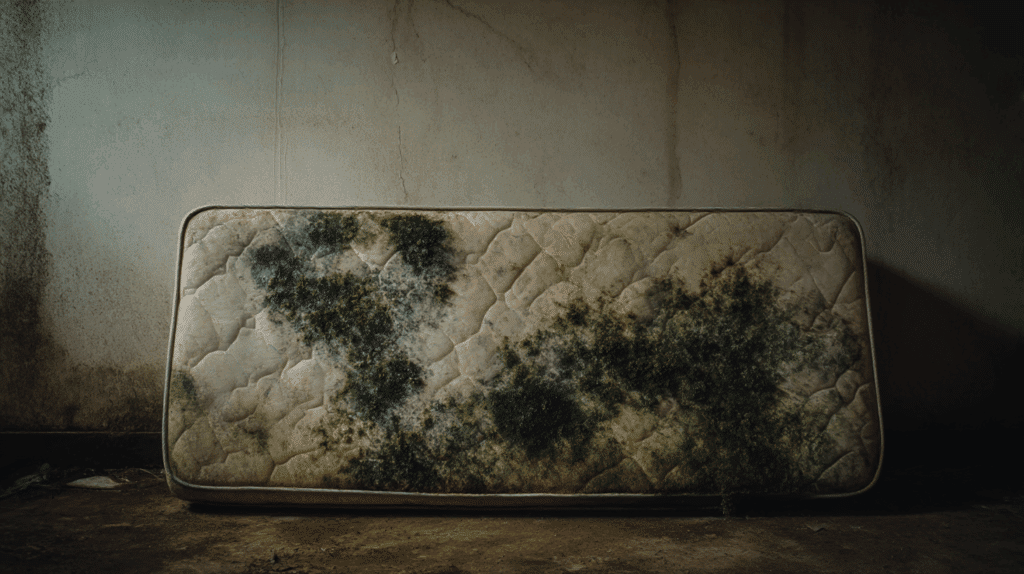Finding the perfect blanket size can make the difference between a cozy night’s sleep and constantly fighting with covers that are too small or too big.
The right blanket should cover your entire bed with enough overhang to tuck in comfortably without overwhelming your space.
This guide covers everything you need to know about queen blanket sizes, including exact dimensions, how they compare to other sizes, and the best materials for different needs.
If you’re shopping for your first queen bed or upgrading your bedding, you’ll have all the information needed to make the perfect choice.
Queen Size Blanket Dimensions
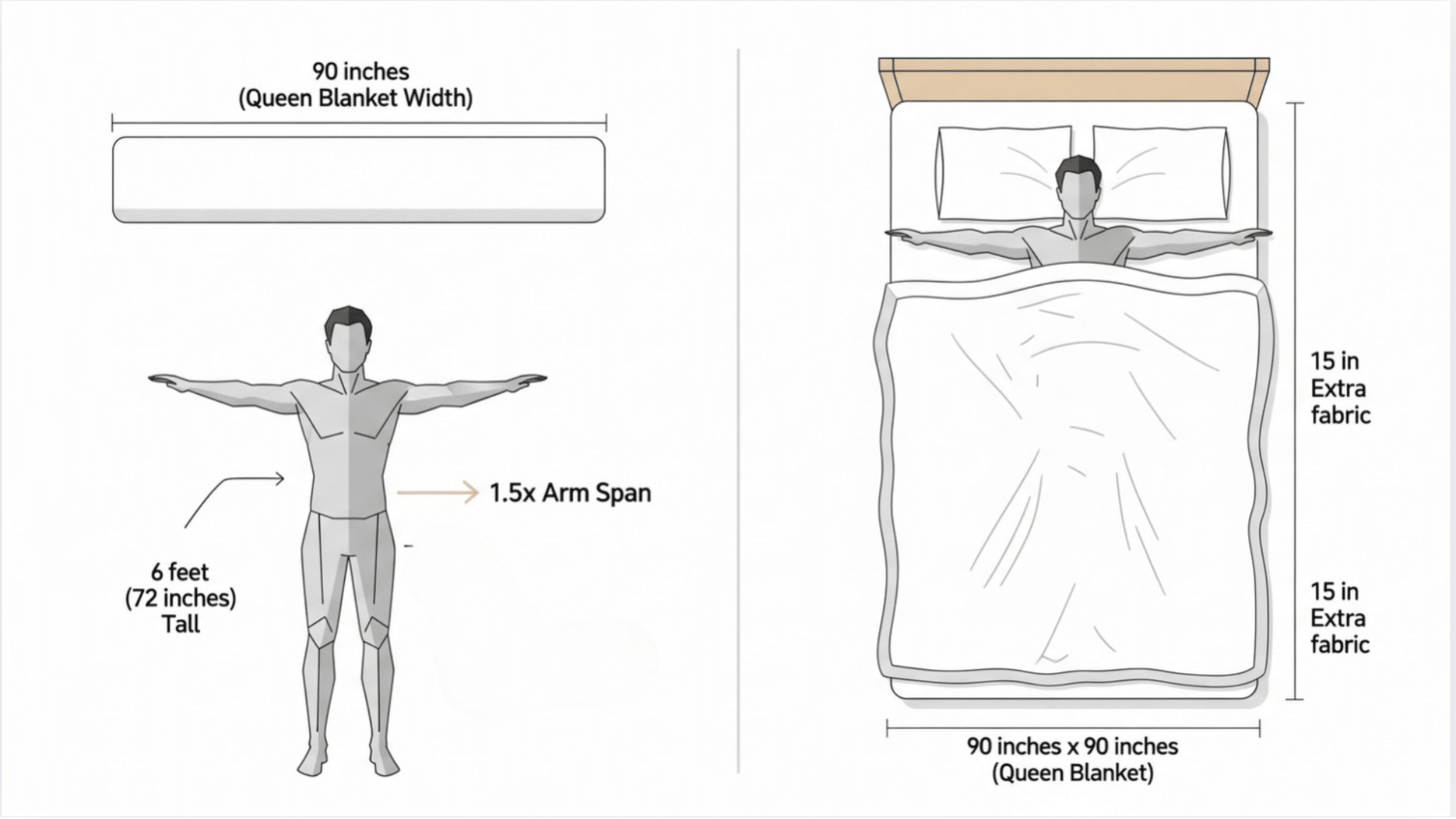
A standard queen blanket measures 90 inches wide by 90-100 inches long (229 cm x 229-254 cm).
This size is specifically designed to comfortably cover a queen mattress, which measures 60 inches wide by 80 inches long.
The extra width and length provide a generous overhang on both sides and at the foot of the bed. This overhang typically gives you about 15 inches on each side and 10-20 inches at the foot, creating that cozy, tucked-in feeling.
Keep in mind that dimensions can vary slightly between manufacturers and blanket styles.
Some brands make their queen blankets closer to 90×90 inches, while others go up to 90×100 inches for extra length.
Visual Size Comparisons
To help you picture queen blanket size, let’s compare it to an average adult man (about 6 feet tall).
A queen blanket at 90×90 inches would be wide enough for that person to stretch his arms out completely and still have fabric left over.
The queen size strikes a perfect balance between coverage and manageability.
At 90 inches wide, it’s about 1.5 times the width of an average person’s arm span, giving plenty of room to wrap up comfortably.
When that same 6-foot person lies down on a queen bed with a queen blanket, he’ll have about 15 inches of extra fabric on each side.
Household Comparisons
A queen blanket is larger than most household items you might compare it to. It’s about the same width as a standard sectional sofa and long enough to drape from the seat to the floor with extra length.
You could easily wrap a queen blanket around a dining table that seats six people. Think of it as big enough to cover a small car or create a cozy fort that multiple people can fit inside comfortably.
When folded, a queen blanket takes up significant storage space – roughly the size of a large pillow or small suitcase.
Best Materials for Queen Blankets
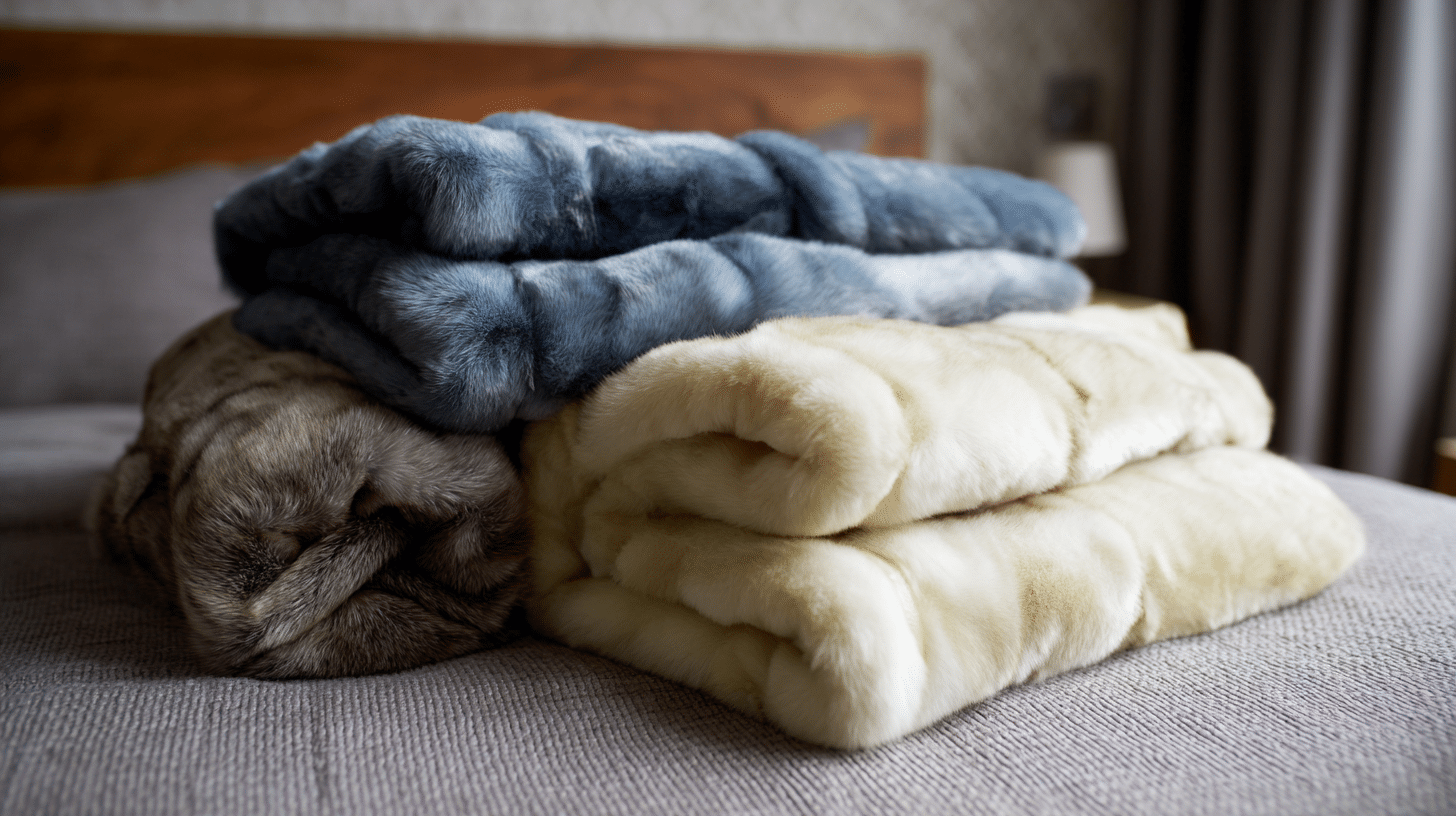
Choosing the right material affects your comfort, maintenance routine, and how long your blanket lasts:
- Cotton: Breathable, soft, and works well in all seasons. Gets softer with each wash and is hypoallergenic for sensitive skin.
- Fleece: Provides lightweight warmth and is incredibly easy to maintain. Dries quickly, resists wrinkles, and stays soft wash after wash.
- Minky: Feels luxuriously soft and plush against your skin. Made from polyester microfibers that create an incredibly smooth, “hug-like” texture.
- Flannel: Warm and fuzzy, perfect for winter nights. The brushed surface traps heat effectively but can shrink if not pre-washed properly.
- Wool: Offers excellent temperature regulation – keeps you warm in winter and cool in summer. Naturally resists odors but requires special care.
Consider your climate, how often you want to wash your blanket, and any allergies when choosing materials.
Blanket Size Comparisons
Understanding all blanket sizes helps you make the best choice for your specific needs and bed setup. Here’s how queen blankets stack up against every other standard size.
| Blanket Size | Dimensions | Mattress It Fits | Best For |
|---|---|---|---|
| Throw/Lap | 50″ x 60″ | None (decorative) | Couches, chairs, light coverage |
| Twin | 65″ x 90″ | Twin beds (39″ x 75″) | Kids, single sleepers, dorm rooms |
| Twin XL | 65″ x 95″ | Twin XL (39″ x 80″) | Tall single sleepers, college dorms |
| Full/Double | 80″ x 90″ | Full beds (54″ x 75″) | Young adults, guest rooms |
| Queen | 90″ x 90-100″ | Queen beds (60″ x 80″) | Couples, most bedrooms |
| King | 108″ x 90-100″ | King beds (76″ x 80″) | Large beds, people who like extra coverage |
| California King | 108″ x 102″ | Cal King (72″ x 84″) | Tall people, extra-long beds |
Choosing the Right Blanket Size

Choosing the right blanket size depends on your bed size, sleep habits, and personal preferences for coverage.
Here’s how to decide whether queen size is perfect for you or if you should consider going bigger or smaller.
1. When Queen Size is Perfect
Queen blankets work best when you have a queen mattress and want balanced coverage.
They’re easy to handle when making the bed and provide enough material for two people to share comfortably.
If you sleep alone on a queen bed, a queen blanket gives you plenty of extra material to wrap up in.
For couples who don’t move around much during sleep, a queen-size bed provides adequate coverage without excess bulk.
2. When to Consider Going Bigger
Some people prefer using a king-size blanket on their queen bed for extra coverage and drape.
This works well if you’re tall, move around a lot during sleep, or just like having lots of blankets to work with.
A larger blanket also helps if you have a thick mattress or use multiple layers of bedding. The extra material ensures you still have good coverage even with added height from mattress toppers or thick sheets.
3. Personal Sleep Habits Matter
Consider how you and your partner sleep before choosing a size. If either of you tends to hog the covers or moves around frequently, a larger blanket might prevent nighttime battles over bedding.
Solo sleepers who like to cocoon themselves in blankets often prefer the extra material that comes with sizing up. However, remember that larger blankets are heavier and take up more storage space.
Additional Tips for Buying and Caring for Your Queen Blanket
Getting the most from your queen blanket investment requires smart shopping and proper maintenance.
| Care Aspect | Best Practice | Why It Matters |
|---|---|---|
| Washing Frequency | Every 2-3 weeks or as needed | Keeps the blanket fresh without overwashing |
| Water Temperature | Cold water for most materials | Prevents shrinking and color fading |
| Detergent | Gentle, fragrance-free options | Maintains softness and prevents skin irritation |
| Drying | Low heat or air dry | Prevents damage and maintains texture |
| Storage | Clean, dry, breathable container | Prevents mildew and pest damage |
These practical tips will help you choose wisely and keep your blanket looking and feeling great for years.
Conclusion
Knowing the right queen blanket dimensions (90″ x 90-100″) and understanding material options helps you make an informed choice for better sleep.
The queen size offers excellent coverage for most people while remaining manageable for daily use.
Consider your mattress size, sleep habits, and climate preferences when selecting both size and material.
If you choose cotton for flexibility, fleece for easy care, or wool for temperature regulation, the right queen blanket will keep you comfortable year-round.
Take time to measure your bed and think about your specific needs before making a purchase. Comment below with any questions you have before making the purchase!
Frequently Asked Questions
What Is The Exact Size Of A Queen Blanket?
A standard queen blanket measures 90 inches wide by 90-100 inches long, providing generous coverage for queen-size mattresses.
Can I Use A Queen Blanket On A Full-Size Bed?
Yes, a queen blanket works great on a full bed and provides extra drape and coverage for a more luxurious feel.
How Do I Know If My Queen Blanket Will Shrink?
Check the care label and pre-wash cotton or flannel blankets in cold water to prevent shrinking, while synthetic materials like fleece typically don’t shrink

